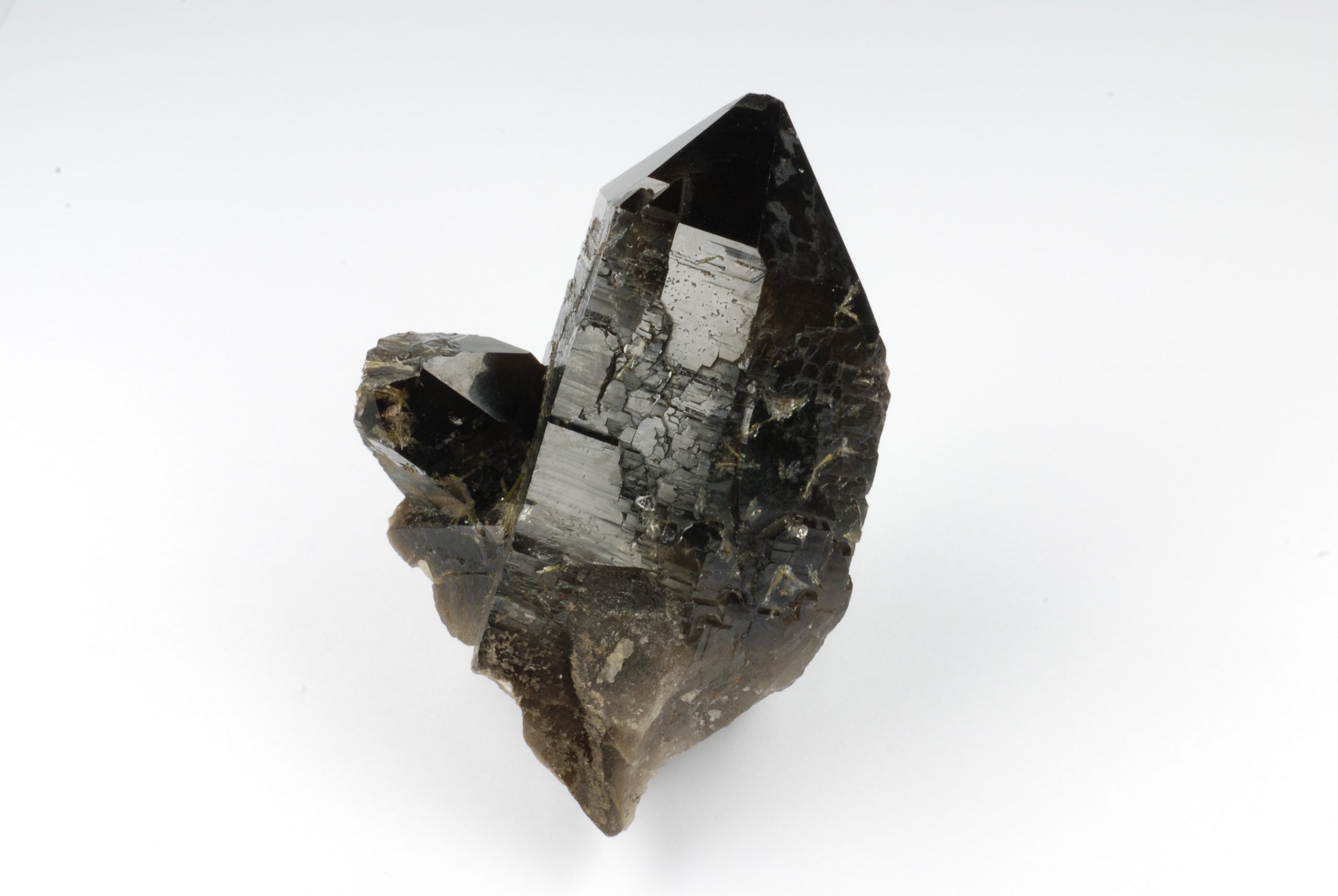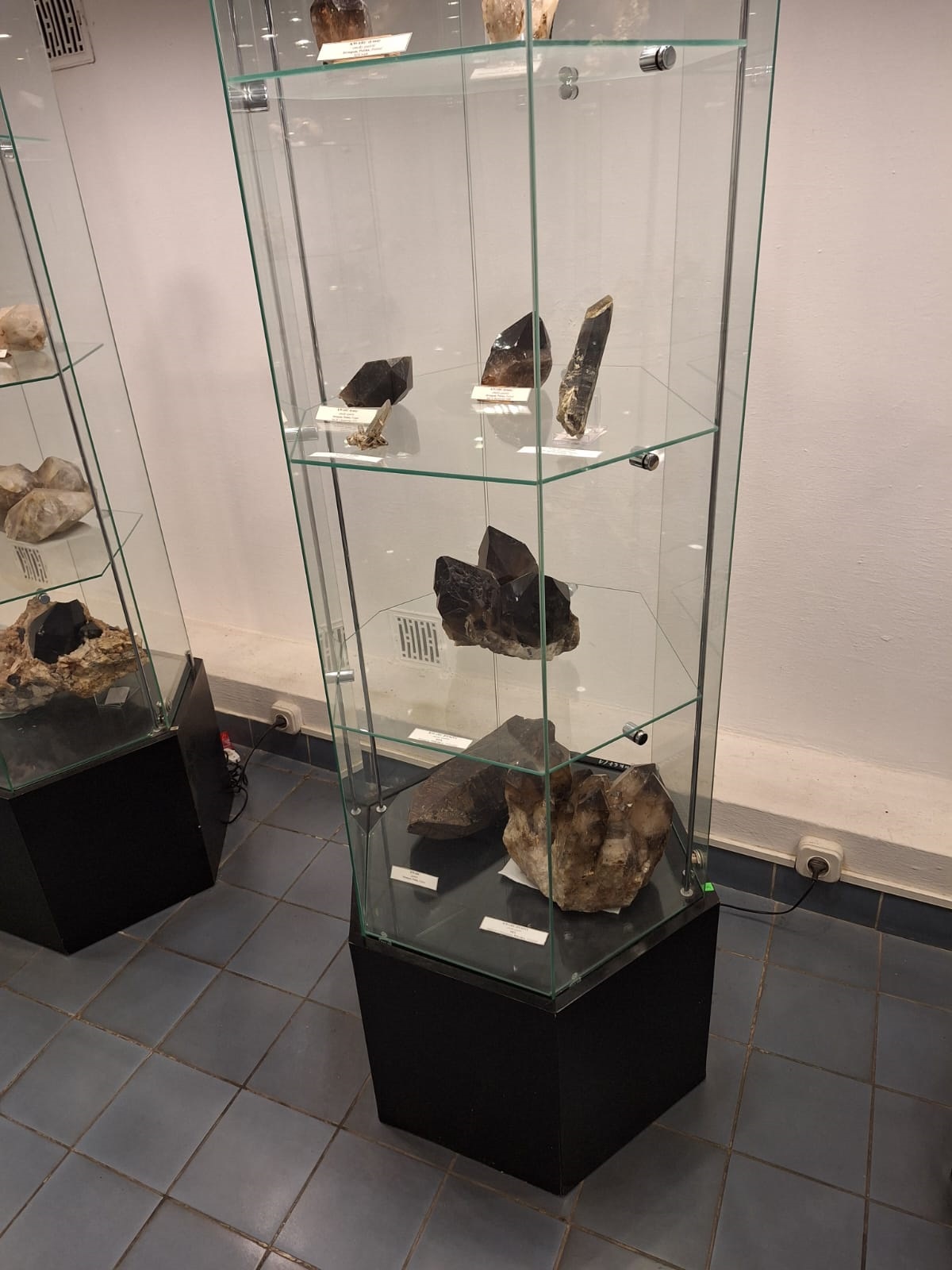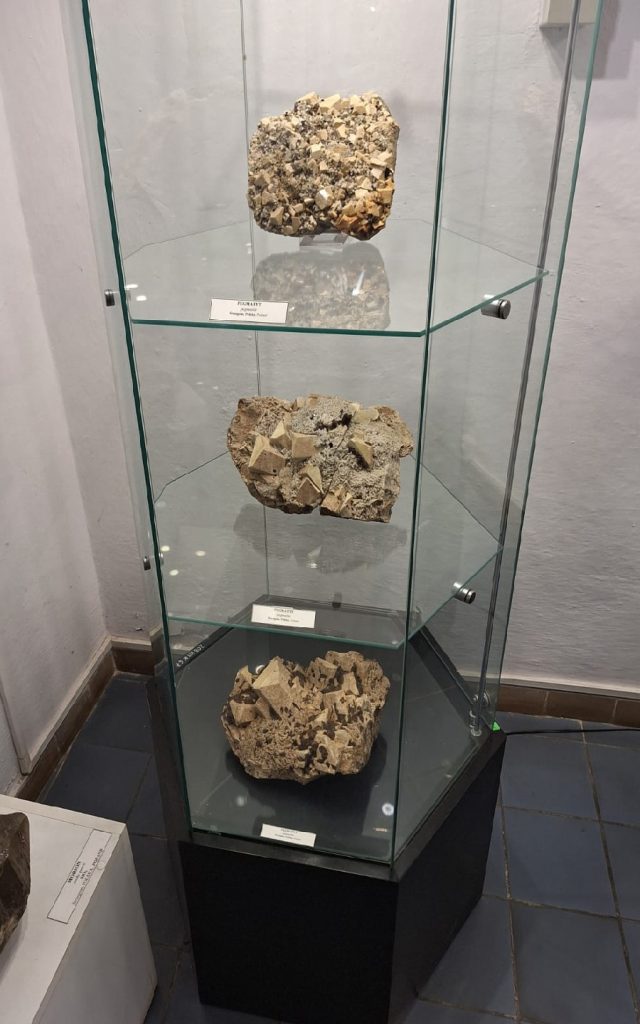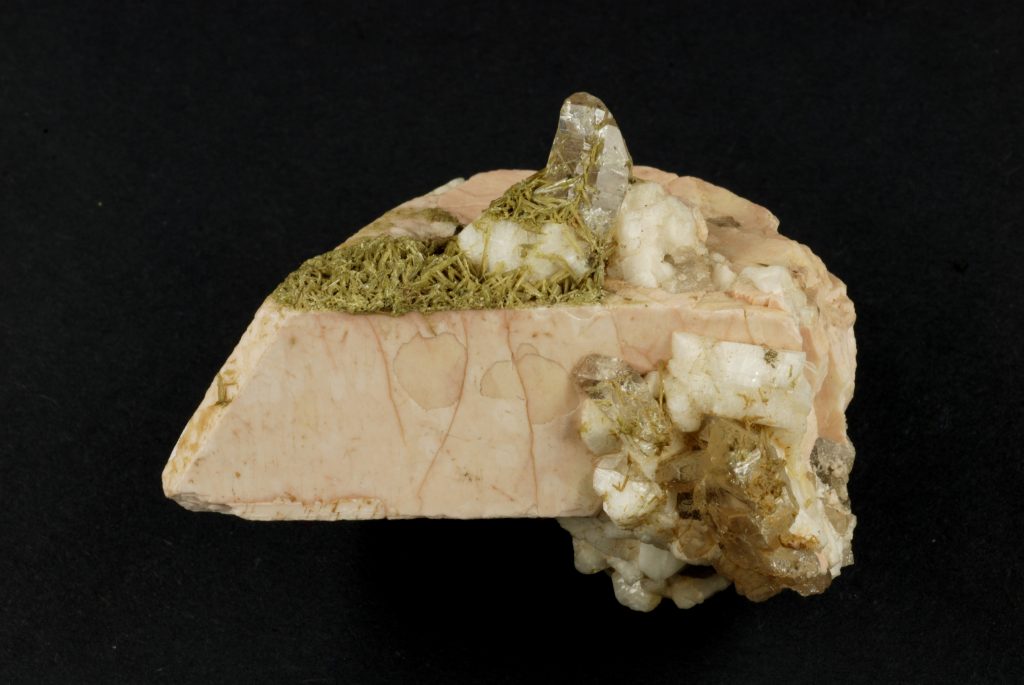
Minerals of the Strzegom Pegmatites
The Strzegom-Sobótka granite massif is situated in the central part of the Sudeten Foreland about 50 km in the southwest of Wrocław. It stretches from Jawor through Strzegom, Sobótka to the Ślęża massif. Its maximum width is approx. 12 km and its length is approx. 50 km. It has the character of a complex intrusion and is a major tectonic unit forming part of the Sudetic Foreland.
Within the Strzegom-Sobótka massif, four basic granite varieties can be distinguished. In the eastern part of the massif, there are biotite granodiorites and biotite granites with vein pegmatites. Meanwhile, in the western part of the massif, there are hornblende-biotite granites and biotite granites with miarolitic pegmatites.
Within the Strzegom Hills, there are numerous granite quarries, some of which are over 100 m deep, and the area is dotted with large cranes (derricks and cranes) often resembling harbour cranes. The highest density of granite quarries is found in Graby, which is a district of Strzegom (a former village called “Grabina Śląska”), and in the vicinity of the village of Kostrza.
Pegmatites are a type of magmatic rock characterised by a particular mega- or gigantocrystalline texture, enriched in rare elements and volatile minerals such as fluorine, boron, phosphorus and others. The most common type is granitoid pegmatites. They are open-crystal rocks with very large crystals (from a few centimetres to several metres). Myarolitic pegmatites with nests filled with crystalline brushes of the best-formed minerals occur. The basic pegmatite structure is scribal overgrowth, also known as scribal granite (resembling Hebrew script). The scribal zones usually occur in contact with the shield rocks next to the aplite zone.

Stages of granitoid pegmatite formation (according to Fersman):
Magmatic stage
– geophase A, magmatic, granite crystallisation with tourmaline suns.
Post-magmatic stage – crystallization stage from residual melt (3 phases-solid, liquid and gas)
– geophase B – aplite rock with grains of almandine and magnetite
– geophase C – pegmatite with pismatic alteration.
Pneumatolitic stage – crystallisation from gas-liquid solution (2 phases – liquid and gas)
– geophases D and E – blocky quartz-feldspar pegmatite with miarolites present. Presence of sherlite, topaz, muscovite and beryl.
Hydrothermal stage – crystallisation from hydrothermal solution (3 phases – solid, liquid and gas) montmorillonite
– H, I and K geophases – sericite, fluorite, carbonates, sulphides and zeolites are formed.
Hypergene stage – kaolinite, calcite, chalcedony and other hypergene minerals (secondary minerals) are formed.


